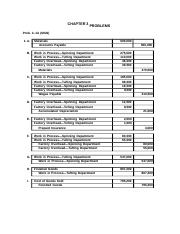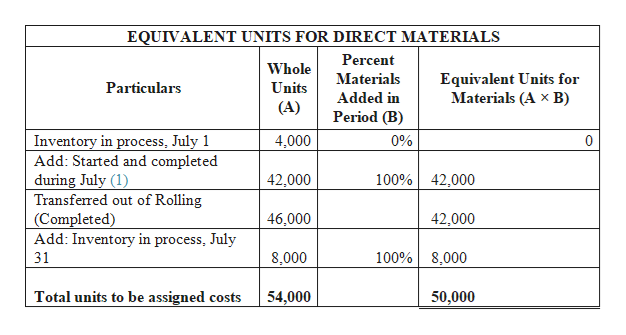3 Types of Inventory
The three most important types of inventory are the raw materials, the work in progress (WIP) inventory and the finished goods. Work in process (WIP), work in progress (WIP), goods in process, or in-process inventory are a company’s partially finished goods waiting for completion and eventual sale or the value of these items.
Understanding Works-in-Progress (WIP)
Work in progress is not accounted for in raw materials inventory and it is not ready for accounting as a final product. Small businesses need to consider the best way to valuate work-in-process inventory. The WIP figure reflects only the value of those products in some intermediate production stage. This excludes the value of raw materials not yet incorporated into an item for sale.
Work in Progress or WIP, as the name suggests are the goods that are not complete and are at some stage of production. The item is inclusive of entire raw materials that go into the production. Cost of processing is significant because each semi-finish product moves through the various manufacturing steps.
How do you calculate work in process inventory?
The work in process formula is the beginning work in process amount, plus manufacturing costs minus the cost of manufactured goods.
The Difference Between Work in Progress and Raw Materials in Accounting
Work in process is also a useful measure for management, because it provides a tool for tracking production flow and costs. Costs that are represented in the work in progress account include direct materials, direct labor, and manufacturing overhead. As work proceeds in a production process, costs flow from the raw materials inventory account, into the work in progress inventory account, and then into the finished goods account. Represent all of these costs as current assets in inventory accounts on the balance sheet. Once you sell the finished goods, transfer the associated costs to the cost of goods sold account on the income statement.
Work in process inventory is an asset The ending work in process inventory is simply the cost of partially completed work as of the end of the accounting period. Ending WIP is listed on the company’s balance sheet along with amounts for raw materials and finished goods. Work-in-progress, as mentioned above, is sometimes used to refer toassetsthat require a considerable amount of time to complete, such as consulting or construction projects.
The term work-in-progress (WIP) is a production and supply-chain management term describing partially finished goods awaiting completion. WIP refers to the raw materials, labor, and overhead costs incurred for products that are at various stages of the production process.
Inventory is either the finished goods stored and offered for sale by a business or the raw materials used by a company to produce finished products. An inventory control system is a process businesses use to manage inventory. Three general types of inventory control systems include continuous review systems, periodic review systems, and just-in-time inventory control. Beginning work-in-process inventory involves determining the value of products that are in production but that have not yet been completed at the end of an accounting period.
This differentiation may not necessarily be the norm, so either term can be used to refer to unfinished products in most situations. This account of inventory, like the work-in-progress, may include direct labor, material, and manufacturing overhead. Inventory means those current assets, which have been or will be converted into the final products of a company for sale in the near future. In other words, inventory represents finished goods or goods in different stages of production that a company keeps at its premises or at third-party locations with ownership interest retained until goods are sold.
Inventory accounts are reported as current assets on the company’s balance sheet. Use these accounts for internal analysis as well as external financial reporting. At any given time, a portion of the inventory in a manufacturing operation is in the process of being transformed from raw materials or components into finished goods. Refereed to as a work in progress, a work in process or a WIP, this part of the overall inventory is an asset. In order to properly account for partially completed work, a business needs to determine the ending work in process inventory at the end of each accounting period.
Work in progress also excludes the value of finished products held as inventory in anticipation of future sales. Work in process is the term for a product that is being manufactured, but which is not yet completed. That is, WIP doesn’t include raw materials that have not been used yet or completed goods.
And they have also not reached the stage where they have been converted into the final product. Direct materials are materials that are consumed during the manufacture of a product.
- It is one of the inventory accounts commonly used to track the flow of costs in a production process.
- In accounting, a work in progress (WIP) account is an inventory account that includes goods that are in the process of being produced but are not yet finished.

Significance of a Work in Process
WIP is a component of the inventory asset account on the balance sheet. These costs are subsequently transferred to the finished goods account and eventually to the cost of sales.
How is absorption costing treated under GAAP?
For most manufacturing operations, the costs that are included in an ending work in process inventory are raw materials or parts used, direct labor and manufacturing overhead. For construction or other lengthy projects, the components of a WIP are often listed as materials, wages and benefit costs for labor, subcontractor costs and expenses. Either way, determining the value of work in progress can be time consuming, so companies try to minimize the WIP directly before the end of the accounting period. Work in process or progress is a part of a manufacturing company’s current assets and its value needs included in the inventory-cost-of-production report. Manufacturing firms receive raw materials from suppliers, store them and maintain accounting for the value of the raw materials.
Work in Progress vs. Work in Process: What’s the Difference?
As much as possible, retail and merchandising businesses want to have a reasonable balance in their Inventory accounts. This same goal applies to WIP, which directly relates to the production process of the company. WIP is clearly different from the other types of inventory for manufacturing concerns. Deciding how to account for work-in-process inventory value is an important financial accounting and strategic business decision.

In accounting, a work in progress (WIP) account is an inventory account that includes goods that are in the process of being produced but are not yet finished. This account represents the costs of resources used but not yet turned into completed products. It is one of the inventory accounts commonly used to track the flow of costs in a production process. Other common inventory accounts include raw materials and finished goods.
To determine the cost per unit under process costing, each expense must first be assigned to a process then categorized as a direct materials cost or conversion cost. Once these steps have been completed, the expenses can be divided by total units produced to obtain the cost per unit. In the books, the company takes all costs associated with the WIP such as raw material cost, factory overhead cost, and direct labor costs and so on. A term that many often use interchangeably with the WIP is the work in process.
These items are either just being fabricated or waiting for further processing in a queue or a buffer storage. Work in progress describes the costs of unfinished goods that remain in the manufacturing process while work in process refers to materials that are turned into goods within a short period. The terms work in progress and work in process are used interchangeably to refer to products midway through the manufacturing or assembly process.
Inventories are the assets that will be of have been converted to the final products of a company. They are of three major types, namely raw materials, work in progress and finished goods. The management of inventory calls for an optimum level of inventory that can be maintained by creating an inventory purchasing plan as per the strategy adopted by the company. They are the raw materials that have been taken out of the raw materials store and are now undergoing the process of their conversion into the final products. These are the partly processed raw materials lying on the production floor.
Though both terms mean the same, sometimes they may denote a different thing. The work in process may sometime refer to a product that moves from raw materials to a finished product in a short time, such as manufacturing goods. On the other hand, the work in progress may refer to an asset that needs more time for completion, such as construction or consulting projects. A firm accounts for the work in progress towards the end of the accounting period. The accounting of WIP helps a company to determine the value of inventory that is in the production process.
As raw materials are pulled for use in production, they are no longer accounted for within materials inventory. Once products are finished, they are accounted for in the value of final product inventory. During the interim, the value of the work in process is accounted for separately. Work in progress, also referred to as WIP, is a term used in supply chain management to describe the costs of unfinished goods in the manufacturing process.